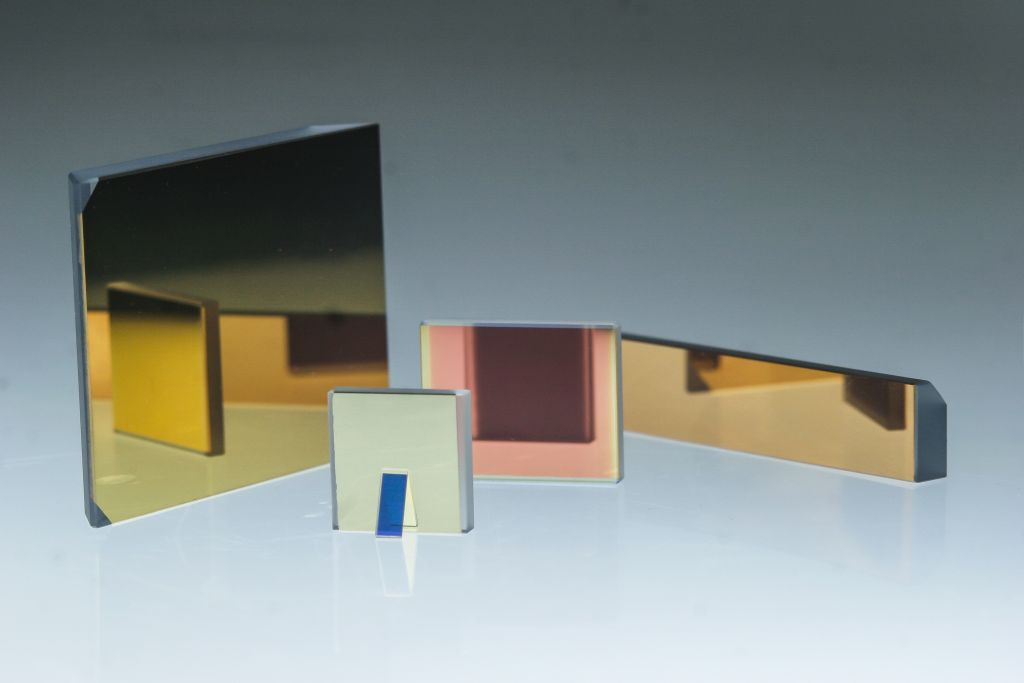hot and cold mirrors
Solaris Optics manufactures custom hot and cold mirrors in its premises in Poland.
In brief:
- Hot mirror reflects IR light
- Cold mirror reflects visible and UV light
Hot and cold mirrors are types of mirrors with special spectral properties, sometimes called also IR or heat control filters.
Cold mirror (IR passing filter) is a specific dielectric mirror that, typically, reflects visible light (e.g. about 95%) and transmits infrared wavelengths (e.g. 90% of IR above 750 nm). Another instance of this type of a mirror is a UV cold mirror, which reflects UV wavelengths and transmits visible and IR ranges.
Hot mirror (IR blocking filter) has opposite spectral characteristics – it reflects near infrared light and transmits the visible and UV part.
Both types can be designed (also by us) and used for specific angles of incidence, from 0 to 45 deg, however in practice a hot mirror typically operates at a low angle of incidence, whereas a cold mirror operates typically at 45 deg angle of incidence.
Hot and cold mirror substrates are typically heat resistant glasses, such as borosilicate, fused silica, sometimes also ceramic glasses such as Zerodur may be necessary. In Solaris Optics we use substrates according to customer requirements or to the needed specifications (when we also support in design).
Applications of hot and cold mirrors
Examples:
- surgical and dental lasers, where the invisible IR laser beam is transmitted through a tilted cold mirror and allows to cut tissue, whereas a visible laser beam is reflected from the cold mirror and serves as a marker for the active IR laser beam; in this application cold mirror acts as a dichroic beamsplitter;
- illumination, lighting systems to separate IR radiation from the visible light (heat protection);
- semiconductors manufacturing (UV cold mirror);
- UV curing processes of adhesives, inks, coatings (UV cold mirror, allows to take away heat generated by UV lamps);
- night vision displays;
- TV and photo cameras;
- scientific instruments, e.g. fluorescence microscopy;
- projector systems to avoid heat build-up (heat filtering);
- photocopiers;
- mirrors for IR diode lasers;
- CCD imaging (as IR cut filters)
- protection of heat-sensitive plastic optics (hot mirrors)
- optical fibers to separate UV and IR (which may be harmful to the fiber) from the visible light.
Solaris Optics produces hot and cold mirrors according to customer specification or documentation (shape, dimensions, substrates, spectral characteristics, etc).
Should you have questions about hot and cold mirrors, please do not hesitate to contact us!.
See also:
Mirror coatings
Quality in Solaris Optics
***


